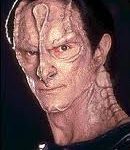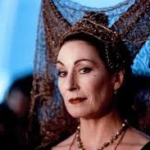Bad Guys Aren’t All That Bad (or at least they shouldn’t be)
We’ve been exploring characters in novels these past week. Today, I want to take a little bit of time talking about bad guys. Most novels have an antagonist. Not all, but somewhere along in your novel writing career you will probably have one bad guy show up (or gal). Writers really have a tendency to lean toward the stereotype with antagonists, and maybe that’s because we’re such nice people and don’t really know any evil folks and so we don’t have a clear idea what a bad guy really is like . . . except from all those superhero movies we watch. And those are just adding to the problem of badly created antagonists in our novels.
Maybe some writers feel the antagonist doesn’t have to be a sympathetic character. Why in the world (you may ask) would I want my reader to sympathize with that creep? Well, I’m going to give you a good reason, so hold that thought. Just as with any and every character in our novel, we want our bad guy to be believable. And what have we discussed about creating believable characters? That they are complex, contradictory, and they have a past that has made them who they are.
Past is key with your antagonist because usually there is something that happened way back when to your character that has made him (or her) into the vile, despicable person he is today (or at least on the day in your novel when she’s introduced). And sometimes when we get an understanding of why a person behaves the way they do, what made them that way, we often can muster up some compassion for them. Face it–bad guys aren’t always 100 percent bad, just as good guys aren’t perfect. No one will relate to a hero/protagonist that has no flaws, and no one will believe an antagonist that has no redeeming qualities.
Characters You Love to Hate
I’m a big Star Trek fan, and for those of you who have watched Deep Space Nine, you’ll know what I’m talking about when I say the Cardassians are a great example in a collective way of the antagonist/bad guy that has contradictory qualities. Cardassians are very cruel and heartless, void of mercy, and yet they are extremely affectionate and tender toward their children and devoted to their wives. Gul Dukat is one of the best characters in the series due to his complexity and seeming contradictions. You can hate him all your want, but there are moments . . .
Cardassians are a great example in a collective way of the antagonist/bad guy that has contradictory qualities. Cardassians are very cruel and heartless, void of mercy, and yet they are extremely affectionate and tender toward their children and devoted to their wives. Gul Dukat is one of the best characters in the series due to his complexity and seeming contradictions. You can hate him all your want, but there are moments . . .
A Glimpse of Vulnerability Goes a Long Way
And this is where you’ll want to do some special work on your antagonist. You are not risking anything by having your reader feel just a little sympathy or empathy for him. Ever After is the perfect example of a movie that portrays the perfect antagonist. Anjelica Huston’s character is such a horrible, wicked stepmother that you just hate her guts. And yet the screenwriter did a fantastic job by writing the one and only scene (moment) where we see a hint  of her humanity and actually feel something for her. It’s truly brilliant.
of her humanity and actually feel something for her. It’s truly brilliant.
In that scene she tells Danielle (read: Cinderella) to come over and brush her hair. For just a moment she softens and mentions how the girl looks so much like her father (although she has to poison the line by commenting on how manly her features are). Danielle then asks her if she loved August (her father), and the stepmother says sadly that she didn’t really know him all that well. This is such a subtle but powerfully tender moment where for a second we see not just a soft side to the evil stepmother but a fragility and vulnerability. In that one moment we can understand why she is so scheming and ambitions and mean. We see her deepest fears in her face–maybe the fear of being alone, of losing everything. She still goes on to do hateful things, and in the end we are glad she gets her just desserts because she doesn’t change right then–not at all. But by getting that moment of a glimpse into her soul and the hurt she holds inside, she becomes a much richer and believable character. We understand her motivation and why she is so mean. We don’t condone her behavior, but she is now fully real to us–even in a fairy tale structure such as this. which is what makes Ever After one of the best fairy tales movies ever made.
Next time we’ll look at some ways to make your antagonist truly real, believable, and yes, sympathetic–which really is a good thing to do!
This week, if you have an antagonist in your book, take a good look at him or her. See if this character is just a flat stereotype or is complex. Does this character have a redeeming quality? If you haven’t shown it, find a place in your book to reveal this. It can be shown through dialogue, action, or internalizing. Play around with this and see if you’ve made your antagonist better and more believable. If you are still in the planning stage, come up with a rich past as we’ve discussed in earlier posts, and then give your antagonist one vulnerable quality or moment that’s not trite but genuinely shows a human side.












I do a lot of theatre as well as writing, and like I tell both other actors when directing, and other writers when discussing such things, “As much as we hate to admit it to ourselves, every Nazi that ever lived was a human being.”
By remembering that, antagonists, even the evil ones, have a connection to the reader or audience that can sometimes give chills…realizing that at least in a few basic ways we are not that different from the enemy about which we are reading.
FYI, Danielle’s father was August; her best friend was Gustav. 🙂
One way I try to make my evil, evil monsters relatable and understandable is to tell scenes from their POV and show their thought processes. In their minds, their actions are justified for these reasons. They were hurt or denied or held back in this way, which makes what they do just fine.
I also use a lot of humor to express the grimness of their evil. I show that their thoughts and actions are at odds with one another, yet they don’t realize it. I have them beating on a subordinate, and since we don’t like the subordinate anyway, we kinda giggle over it. It’s the “giggle because I don’t know how else to respond” type, but it’s better than black, blacker, blackest.
I don’t usually give my antags any really “good” points, since I go for archetypes in my writing, but I try to make them believable.
Thanks for the thoughts, and for correcting me on that name. I’ll fix it in the post!
CS,
John Sanford’s Prey series have the most despicable antagonist one can imagine. They are truly people whom readers can love to hate. It is rare that one of his antagonists has a redeeming quality. However, he does on occasion tell the reader a few hints about what made the antagonist this way, and that is it.
I’ve been reading his Prey novels lately and he has inspired me to come up with an amoral antagonist that is just a horrible person, a real sicko.
Sanford’s real name is, John Camp, a Pulitzer prize winning journalist. His Lucas Davenport series is his best work because he has so many rounded out characters that he uses over and over in successive novels. He lives in the area where his plots take place and makes full use of the geography he is very familiar with.
He has something like 25 best sellers.
He was a Spotlight author speaker at ThrillerFest/CraftFest/AgentFest in NYC last July. All the best thriller writers and aspiring authors and readers attend this conference.
Who are you referring to?
Excellent post. Your examples really worked to illustrate the point – gave me some definte aha moments. 🙂
The antagonist doesn’t necessarily need to be likeable. Think Alien or Hangover. They have a purpose, usually after the hero’s return from the journey.
Most everyone is like the moon: they have a bright side and a dark side. Human personalities aren’t always clear cut and neatly defined. Two people can have completely different perceptions of the same individual; depending on their respective experiences with that person. To have absolute delineations between a protagonist and an antagonist – that is, to say that the heroic figure is always good and does nothing wrong, while the villainous character is always diabolical – is somewhat juvenile and cartoonish. It’s a simplistic way of writing; which is fine, I suppose, if your intended audience doesn’t expect much from the author. I’d rather make my key characters more complex and lifelike and let the reader form their own opinions about them.
timely cs– seeds you planted months ago sprouted in me mind. your post echoed thoughts I was having last night while rereading/ editing. thanks for your output.
am reading fierce invalids home from hot climates–no antagonist!
lots of laughs!